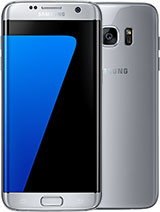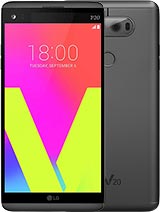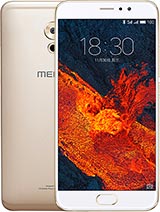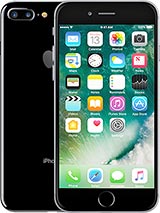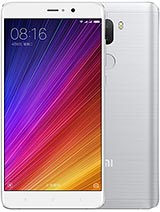Huawei Mate 9 Pro review: The Magician
The Magician

Final words
Huawei Mate 9 Pro is a wonderful conclusion to the Mate 9 series, meeting the market's demand for a premium twist on all recent flagships. The sole existence of the Mate 9 Pro leaves room for the original Mate 9 popularity to grow and thus sell better by being the more affordable and mainstream model, without giving up on any important features.

There is also another good reason for the Mate 9 Pro existence - it gives you the opportunity to own the Porsche Design edition without actually paying double for the premium Porsche logos. And the new dual-curved AMOLED screen, the completely different design, and the increased memory are worth the extra $100 over the original Mate 9.
We had lots of expectations when we took the Mate 9 Pro for this review, mostly because the Mate 9 had already raised the bar rather high. And the Pro flavor did not only meet those but even managed to exceed some of them.
Its AMOLED screen may not be Samsung-grade in color accuracy and sunlight legibility, but it does surpass most of the current crop of flagships. And the GPU may not be acing the tests, but the processor is top of the line. The rest is quite on par - a memorable design, an amazing camera experience with a great creative potential, a superb battery life, loud stereo speakers, and the pleasant Emotion UI.
Huawei Mate 9 Pro key test findings
- Premium build and design, it looks quite familiar, though.
- The high-res AMOLED screen has superb pixel density and contrast. Color accuracy isn't top-notch, and the maximum brightness is average.
- Solid battery life, excellent at web browsing, very good at video playback, okay for voice calls.
- EMUI is a functional Android overlay, even if it has its quirks. Huawei has worked a lot on polishing single-handed operation, and it shows, knuckle gestures are somewhat gimmicky, but the addition of an app drawer will make transition easier for those who are not used to an iPhone-like single-tier interface.
- Class-leading CPU performance by the Kirin 960 chipset, GPU doesn't shine but is a substantial leap forward from previous designs.
- Very loud and extremely clean output from the built-in speakers.
- Multimedia package gets the job done - the gallery is basic, but the image editor is very powerful, the video player has little more than play/pause, and the music app looks good and works well, but lacks an equalizer.
- Audio output is loud, but clarity with headphones isn't perfect.
- Still images show cautious processing with accurate colors, high detail level, and great dynamic range. The monochrome camera takes these another notch up (minus the colors, obviously). The lossless-like zoom works up to 3x, which is nice.
- 4K videos are very detailed, if a little noisy, but the h.265 codec makes for problematic sharing. 1080p footage is nothing special.
Huawei Mate 9 had a great foundation laid by the Huawei Mate 8, P9, and the P9 Plus. Putting the Leica camera on a phablet was probably the second-best thing Huawei could have done, with the first being the Leica partnership itself. And the Galaxy Note7 demise surely paved the way for an even more successful Mate 9 series. With the Porsche and Pro flavors, Huawei demonstrated a versatility that very few companies are daring to show.
And we guess the only reason Huawei isn't selling the Mate 9 Pro everywhere is because the P10 generation is just around the corner, and it would have stepped on the P10 toes. It wouldn't have helped the Porsche Design sales either. On the other hand, Huawei made sure all Pro models come with international ROM and warranty, so you shouldn't worry that much about grey imports.
With all that being said, the Mate 9 and P10 aren't the only competition the Mate 9 Pro is facing today. The Galaxy S7 edge with a similar design and specs, but also water-tight, can easily tip the scales in S7's favor. It may not have the Leica tools, but its camera is nothing short of impressive nevertheless (especially its focus). The S7 edge is also cheaper and will get even better deals once the S8 premieres in a few weeks.
The Mate 9 is cheaper, too, offers the same features, but a bigger screen and even better performance due to the lower resolution. It loses the punchy AMOLED and the premium appearance, but quite a few people will argue the bigger screen is worth the change.
The LG V20 is one of the best slates out there, with a big high-res screen, Snapdragon 820 chip, and a different take on the dual-camera setups with regular and wide sensors. Its ruggedly handsome design may not be everyone's cup of tea, but it may win you over with professional-grade audio hardware and chips, a secondary always-on screen, and a microSD expansion.
The OnePlus 3T, one of the hot picks in the past holiday season, is still as attractive. The 5.5" AMOLED screen is great, as is the Snapdragon 821 chip, while it sticks to the stylish design and a traditional one-sensor camera. It's way cheaper, though, and yet equally capable in all but camera skills, so if you are not a camera person, check this one out.
We have recently reviewed the Meizu Pro 6 Plus, and it turned out quite a capable smartphone. The 5.7" 1440p AMOLED screen is as impressive as an AMOLED can get, while the Exynos chip is a welcome return to the Meizu's flagship lineup. The 12MP OIS-enabled camera turned out great, and while it doesn't offer the same creativity level as the Mate 9's, it will do a fine job on any occasion. The limited availability and high price may be a turnoff, though.
The Apple iPhone 7 Plus is in the same price bracket as the Mate 9 Pro. It offers class-leading performance and has an entirely different take on the dual-camera setup - 12MP + 12MP - with a secondary camera with higher magnifiaction. In exchange for a more powerful GPU, you'll have to settle for a less inspiring image quality and imaging capabilities, but the iOS experience and app variety is a tough combination to beat.
Finally, Xiaomi Mi 5s Plus is the biggest threat the Mate 9 Pro could face. The 5.7-inch, FullHD, LCD handset packs a Snapdragon 821 SoC and this makes it faster than the Mate 9 Pro, though the faceplate is less attractive. Xiaomi has pretty much borrowed the Huawei/Leica's idea from the P9 and offers a dual 13MP camera with one color and one monochrome sensor. It lacks OIS, and Leica's exclusive processing, but if you fancy something similar and less expensive, the Mi 5s Plus may turn out to be the right phone for you after all.
You can tell we liked the Huawei Mate 9 Pro a lot. It's a fancy device that leaves a lasting positive impression, and easily likable either because of its design, screen, performance, or camera. Or all of these. The only thing stopping the Mate 9 Pro of being a best-seller is the limited availability, which is probably due to the imminent P10 launch. Its fate will be sealed at the upcoming MWC - either overshadowed by the P10 or standing out in spite of it.
Reader comments
- phi11yphan
- 17 May 2021
- 4cH
agreed. I need my IR blaster. I've been seeking for about a year now, but has been hard to justify yet. could use expandable storage, a better camera, faster CPU, 5g, fresh UI, updated BT, wireless charging, and oh yeah maybe not a vendor on the...
- Anonymous
- 28 Nov 2020
- LdI
huawei mate 9 pro front camera is not so good, does not autofocus and pictures are blurred effect. anyone find it same ? the contrast of pic is pale too, pls give solution guys.
- Grant1080
- 17 Apr 2020
- ii6
Most phones nowadays don't have those things. If you're looking for removable batteries, expandable storage and FM radio, you'll have to go for a feature phone. Phones don't have removable batteries anymore because making them non-removable will make...
